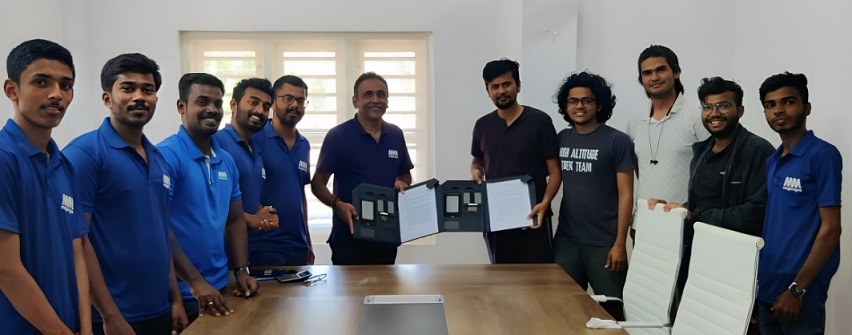Indore-Manmad Rail Line Project: A Historic Gift for Malwa-Nimar Region, Says CM Dr. Yadav
Chief Minister Dr. Mohan Yadav announced that the approval of the Indore-Manmad railway project marks a historic milestone for Madhya Pradesh.

Chief Minister Dr. Mohan Yadav announced that the approval of the Indore-Manmad railway project marks a historic milestone for Madhya Pradesh. Positioned in the heart of India, Madhya Pradesh holds immense potential for railway development, and this project is a significant step forward. Expressing his gratitude, Dr. Yadav thanked Prime Minister Shri Narendra Modi and Railway Minister Shri Ashwini Vaishnaw for their support in approving the project. He emphasized that the new rail line would drive comprehensive development in the Malwa and Nimar regions, particularly benefiting the Scheduled Tribes in these areas. The project, he stated, will usher in positive changes in the lives of these communities, offering new opportunities for employment and industrial growth.
Speaking at a press conference in Indore, Dr. Yadav highlighted the transformative impact of the railway line, which will also boost religious tourism by connecting key pilgrimage sites. The press conference, held in Indore, was attended by prominent leaders including the Minister of Urban Development and Housing Shri Kailash Vijayvargiya, Indore MP Shri Shankar Lalwani, and Khajuraho MP Shri V.D. Sharma.
Key Aspects of the Project:
Prime Minister's Vision for India: Dr. Yadav underscored that under Prime Minister Modi's leadership, India's infrastructure has seen unprecedented growth, enhancing connectivity and accelerating development. The Indore-Manmad railway project is part of this vision, approved by the central government under the leadership of Prime Minister Modi.
Project Details: The new railway line, stretching 309 kilometers, will connect significant districts of Madhya Pradesh and Maharashtra, including Indore, Dhar, Khargone, Barwani, Nasik, and Dhule. With an estimated cost of ₹18,036.25 crores, this project is expected to significantly enhance economic and social development in these regions.
Economic Impact: The project will create new job opportunities, particularly benefiting the youth of the state. It will also improve the transportation of industrial and agricultural products, offering substantial benefits to farmers and industrialists alike.
Boost to Religious Tourism: The rail line will shorten the distance between Ujjain’s Mahakaleshwar Jyotirlinga and Nasik’s Trimbakeshwar Jyotirlinga, thereby promoting religious tourism.
Inclusion of Aspirational Districts: For the first time, Barwani district, an aspirational district, will be integrated into the Indian railway network, improving transportation facilities and opening up new opportunities for economic growth.
Environmental Benefits: The project will help reduce CO2 emissions by approximately 138 crore kilograms annually, equivalent to planting 5.5 crore trees, and save 18 crore liters of high-speed diesel.
Railway Network Transformation: Under Prime Minister Modi, the Indian Railway network has undergone a significant transformation, with over 5,000 kilometers of new tracks being laid annually and more than 1,300 stations being redeveloped. The Indore-Manmad railway project will further strengthen this network.
Contribution to Madhya Pradesh's Development:
The project will connect four key districts of Madhya Pradesh—Barwani, Khargone, Dhar, and Indore—with Maharashtra, providing enhanced rail connectivity for approximately 29 lakh people for the first time.
The project, with an investment of ₹18,036 crores, will not only improve the state’s economic landscape but also foster industrial and agricultural growth.
Agriculture and Industrial Development:
The new railway line will offer alternative and faster transportation options to onion production hubs in Nasik, Dhule, and Nandurbar, benefiting farmers.
The railway link will reduce the distance between Mumbai and Indore by 188 kilometers, cutting travel time by 4.5 hours.
Direct Benefits to Industrial Areas:
The Pithampur industrial area will gain direct connectivity to JNPA and Hazira Port, benefiting major industries such as Mahindra & Mahindra, VE Commercial Vehicles (Volvo and Eicher JV), Force Motors, and Rathi Steel Industries.
The project will also enhance the transportation of food grains, textiles, fertilizers, and steel products, ensuring faster and more efficient logistics.
Encouraging Religious Tourism:
The new rail line will improve access to major religious sites in the Ujjain-Indore region, thereby boosting tourism and pilgrimage activities.
Maharashtra's Benefits:
The rail project will connect key cities in Maharashtra, such as Malegaon, Dhule, Sindkheda, and Shirpur, with direct rail connectivity, thereby stimulating regional economic growth.
Improved access to religious sites such as Trimbakeshwar Jyotirlinga, Shirdi Sai Temple, and Ghrishneshwar Jyotirlinga will enhance religious tourism in Maharashtra.
Investment and State Contribution:
The total investment for the Indore-Manmad railway project is ₹18,036.25 crores, with Madhya Pradesh contributing ₹1,362.80 crores.
The project will cover 309.432 kilometers, with 170.056 kilometers in Madhya Pradesh and 139.376 kilometers in Maharashtra.
Project Timeline and Progress:
The final location survey (FLS) for the Indore-Manmad Broad Gauge Line was approved in 2016, with the detailed project report (DPR) submitted in July 2017. The project's cost has since been updated to ₹18,036.25 crores, and discussions have been held at the NITI Aayog, with the Madhya Pradesh government agreeing to contribute 10% of the project cost.
Land acquisition for the project will involve 905.191 hectares in Madhya Pradesh and 796.104 hectares in Maharashtra, totaling 1,701.295 hectares.
The Indore-Manmad railway project is a significant development that will drive economic growth, improve transportation, and boost religious tourism in Madhya Pradesh and Maharashtra. With substantial investments and strategic planning, the project is poised to transform the region's connectivity and contribute to the broader vision of a developed India.






















